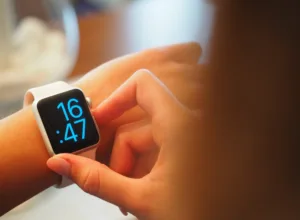When it comes to trying to lose weight, there are a lot of factors to consider. One factor that is often overlooked is your heart rate. How does your heart rate relate to weight loss? Does it matter when trying to reach your goals?
In this blog post, we will explore the relationship between heart rate and weight loss and how you can use it to your advantage when trying to shed those extra pounds. We’ll discuss the effects of different heart rates on your body and how you can use it to boost your weight loss efforts.
The Relationship Between Heart Rate and Weight Loss
When it comes to weight loss, it’s all about burning more calories than you consume. But one often overlooked factor in this equation is your heart rate. A higher heart rate can lead to greater calorie burning and faster results, but how exactly does it work? To understand the link between heart rate and weight loss, it’s important to understand how your body works.
Your body is always working to maintain a steady balance of energy. When you take in more energy (calories) than you burn off, the extra calories get stored as fat. If you take in fewer calories than you burn off, your body has to turn to your fat stores for energy. This is why it’s so important to burn more calories than you consume—in order to achieve weight loss, your body must be able to access those fat stores.
The amount of calories you burn each day depends on many factors, including your basal metabolic rate (BMR). This is the amount of energy (calories) your body uses to carry out basic functions like breathing and keeping your heart beating. It also includes other activities like sleeping, standing, and walking.
“But exercise can increase the number of calories you burn significantly. When you start exercising, your heart rate increases as your body sends more oxygen-rich blood to your muscles”. As your muscles use more oxygen, your body has to work harder to keep up. This is why your heart rate increases when you exercise. And because you’re working harder, you’re also burning more calories.
So, in a nutshell, the relationship between heart rate and weight loss is simple: a higher heart rate means a greater calorie burn. The more you exercise, the higher your heart rate will be and the more calories you’ll burn—which leads to weight loss.
The Fat Burning Zone
When it comes to weight loss, many people have heard of the “fat burning zone”. This is a term that is used to describe the range of heart rate intensity that is thought to be the most effective for burning fat. The fat burning zone is usually defined as working out at an intensity level of between 50 and 70% of your maximum heart rate.
“This range of heart rate is thought to be best for burning fat because it’s not so intense that you exhaust yourself quickly, but intense enough that your body will begin to burn fat in order to fuel the exercise”. It’s also thought that by exercising at this heart rate intensity, you will also be able to sustain your workout for a longer period of time without feeling overly fatigued.
That being said, while exercising in the fat burning zone can be beneficial for weight loss, it may not be the most effective method for everyone. Some people may need to increase the intensity of their workout in order to see better results. That’s why it’s important to consult with a doctor or personal trainer before beginning a weight loss program. They can help you determine what type of intensity is best for your body and fitness goals.

 Cardio vs. HIIT
Cardio vs. HIIT
“When it comes to working out, two of the most popular approaches are cardio and high-intensity interval training (HIIT)“. While both are beneficial for weight loss, they differ in terms of how much they affect your heart rate.
Cardio is any type of exercise that elevates your heart rate, such as running, biking, and swimming. “The goal of cardio is to raise your heart rate to a certain level and keep it there for a certain amount of time”. This type of exercise is great for burning calories and fat, and improving overall cardiovascular health.
HIIT is a more intense form of exercise. It involves short bursts of intense exercise followed by brief periods of rest. During HIIT, your heart rate can reach levels much higher than during steady-state cardio. This type of exercise is beneficial because it increases your body’s fat burning capabilities, even after you have stopped exercising.
So, which type of exercise is best for weight loss? Both types have their own benefits and can be used in combination to maximize results. However, HIIT is generally more effective for burning fat and increasing your metabolism.
Check Out Our List Of The Best Supplements For Building Muscle, Shredding Muscle, Recovery, And Great Health, and Wellness Products! Purchase IFBNewsfeed.Org‘s Apparels Here: IFBNewsfeed.Org
Factors That Affect Your Heart Rate
There are many factors that can influence your heart rate and ultimately affect your weight loss journey. These include exercise, diet, and lifestyle habits.
Exercise: The type of physical activity you engage in will have a big impact on your heart rate. Any type of aerobic activity will increase your heart rate, with higher-intensity exercises like running or cycling having a greater effect. On the other hand, activities such as yoga and Pilates are typically more low-intensity, meaning they won’t raise your heart rate as much.
Diet: Your dietary habits can also affect your heart rate. For instance, eating high-fat and processed foods can cause inflammation, which can lead to a spike in your heart rate. Eating nutrient-rich foods like fruits and vegetables, lean proteins, and healthy fats, however, can help reduce inflammation and support a healthy heart rate.
Lifestyle Habits: Finally, lifestyle habits like smoking and drinking alcohol can have an impact on your heart rate. Nicotine can raise your heart rate by up to 50 beats per minute, while alcohol can slow it down by up to 10 beats per minute. Furthermore, leading a sedentary lifestyle can cause your resting heart rate to become too slow. It’s important to find a balance between resting and being active in order to keep your heart rate healthy.
By understanding the factors that can influence your heart rate, you can better tailor your exercise and diet plan to meet your weight loss goals. Keeping an eye on your heart rate during exercise is also important, as it can give you insight into how hard you’re working and whether you need to push yourself further or back off a bit. Remember, maintaining a healthy heart rate is essential for reaching any health or fitness goal!
Burning fat and achieving your weight loss goals is a complex equation, and while calorie intake often takes center stage, your heart rate plays a crucial role too. Understanding how heart rate interacts with weight loss can help you tailor your workouts and maximize your results.

 The Science Behind Heart Rate and Weight Loss:
The Science Behind Heart Rate and Weight Loss:
Your heart rate, measured in beats per minute (bpm), indicates how hard your heart is working to pump blood throughout your body. During exercise, your heart rate naturally increases as your body demands more oxygen to fuel your muscles. This elevated heart rate translates to greater calorie expenditure, making it seem like a straightforward metric for weight loss.
However, the relationship between heart rate and weight loss isn’t quite that simple. Here’s why:
-
Calorie Burning Matters Most: Ultimately, weight loss boils down to burning more calories than you consume. While a higher heart rate generally leads to more calorie burning during exercise, the total number of calories burned depends on various factors like exercise duration, intensity, and your body composition.
-
Fat-Burning Zones: The concept of “fat-burning zones” suggests that exercising within a specific heart rate range (typically 60-70% of your maximum heart rate) optimizes fat burning. While some truth lies in this theory, as your body primarily utilizes fat for fuel at lower intensities, it’s not the sole determinant of fat loss.
-
Intensity Matters: Focusing solely on heart rate can neglect the importance of exercise intensity. High-intensity interval training (HIIT), for example, involves bursts of intense activity followed by rest periods. Though your average heart rate during HIIT might be lower than steady-state cardio, the intensity spikes trigger a calorie-burning aftereffect, potentially burning more calories overall.
Heart Rate as a Training Tool:
Despite its limitations, heart rate remains a valuable tool for weight loss efforts. Here’s how you can leverage it effectively:
-
Track Progress: Monitoring your heart rate during workouts can help you gauge your effort and track progress over time. Aim to gradually increase your exercise intensity to keep challenging your body and avoid plateaus.
-
Optimize Workouts: Using heart rate zones can guide your workout structure. Alternate between moderate-intensity zones for sustained calorie burning and higher-intensity zones for short bursts to maximize calorie expenditure and keep your workouts engaging.
-
Listen to Your Body: Don’t get fixated on a specific heart rate number. Pay attention to your perceived exertion and adjust your intensity accordingly. Feeling overly strained or dizzy at a certain heart rate is a sign to slow down.
Beyond Heart Rate:
Remember, weight loss is a holistic endeavor. While heart rate plays a role, it’s crucial to consider these additional factors:
-
Diet: Maintaining a calorie deficit by consuming fewer calories than you burn is essential for weight loss. Focus on whole, unprocessed foods and portion control.
-
Strength Training: Building muscle mass through strength training not only boosts your metabolism but also shapes your physique. Aim for two to three strength training sessions per week.
-
Rest and Recovery: Adequate sleep and recovery periods allow your body to repair and rebuild, maximizing the effectiveness of your workouts. Aim for 7-8 hours of sleep per night and incorporate rest days into your routine.
 Wrapping Up
Wrapping Up
Heart rate, while not the sole determinant of weight loss, offers valuable insights into your workout intensity and calorie expenditure. By understanding its limitations and leveraging it alongside other key factors like diet, strength training, and recovery, you can create a holistic weight loss strategy that yields lasting results. Remember, consistency and focus on overall health are key to achieving your goals.
Additional Tips:
- Invest in a heart rate monitor: A wristband or chest strap can provide real-time heart rate data during workouts.
- Consult a fitness professional: A trainer can help you design a personalized workout plan that incorporates heart rate training effectively.
- Prioritize sustainable lifestyle changes: Focus on building healthy habits you can maintain over time for long-term success.
I hope this article has helped clarify the role of heart rate in weight loss and provided you with valuable tools to reach your fitness goals. Remember, consistency and a holistic approach are key to unlocking your full potential.
More About the Best Exercises for Every Muscle Guide Contents
- Muscle Growth Guide: A Comprehensive Guide To “Building Muscle Mass”, Essential Components Of “Muscle Growth” & Resistance Training Strategies For “Muscle Growth”
- Bodybuilding Tips: Unleash Your Inner Beast, “Bodybuilding Tips” for Beginners and Beyond & “Guide To Building Muscle and Strength”
- The Ultimate Guide To “Building Muscle” and “Increasing Strength” & Understanding “Muscle Growth and Strength”

- A1Supplements.com – America’s Favorite Supplement Store.
- Shop Optimum Nutrition Energy: Anytime & Pre-Workout
- A1Supplements.com – Lose Fat, Gain Muscle!
For More News And Daily Updates, Follow IFBNewsfeed.Org on Facebook, Twitter, and Instagram. Comment, Like, And Share With Everyone Who May Need To Be Updated With The Most Recent Fitness/Bodybuilding/Powerlifting And CrossFit News.







